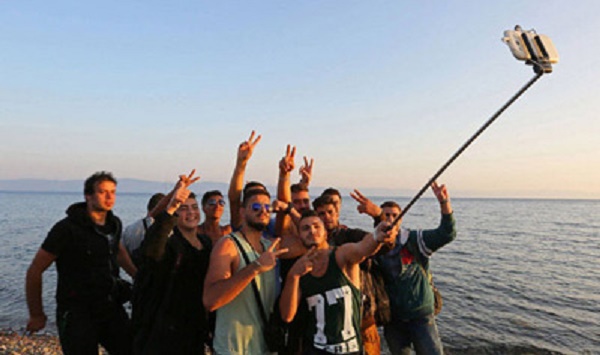This only goes to show just how backasswards the decision-making process is by some in the immigration administration…
Families, however, should always get first priority, especially those who don’t come across as Islamonazis. This couple reminds me of the Bosnians who came to Finland during the 90’s, who were actually grateful to society for letting them in. I don’t know their story, but I give them far more credibility than the smartphone using losers we see on the city streets these days who lied their way in and have burrowed themselves into the welfare system.

In 2015, a record number of asylum seekers arrived in Finland: some 32,500 people, or nearly 10 times as many as the previous year. Most were from Iraq, with smaller numbers from Afghanistan, Somalia and Syria. On some days that autumn, hundreds of people arrived in northern Finland via Sweden and Russia.
The Finnish Migration Service (Migri) scrambled to set up reception centres to house the arrivals. Four years on, many of those people remain in the centres awaiting replies to applications or appeals.
The situation is particularly difficult for families with children, as some youngsters have already begun to identify as Finnish.
An Iraqi couple, Shereen Alwasiti and Ali Alabbodi, and their two daughters are among those awaiting decisions at the Rovaniemi reception centre in Finnish Lapland.
“We’ve been waiting for a long time without any plans for the future. Our only plans relate to our daughters and their schooling,” says Alwasiti.
At age seven and 10, the girls have already settled into life in Finland.
“The younger one considers herself a Finn. When Migri asked her what her native language was, she said it was Finnish. That’s what she thinks, because she goes to school in Finland,” Alwasiti explains.
There are nearly 400 residents each at the reception centres in Rovaniemi and Kemi, both in Finnish Lapland. All, including Alwasiti and Alabbodi, have had their initial applications rejected and are now in the appeals process.
“You become frustrated and exhausted”
The director of the Lapland reception centres, Ritva Metsälampi, says that the long waiting periods are very difficult.
“Four years is a long time in anyone’s life. And especially if you don’t have any specific information about your future or even when it be resolved, you’re bound to become frustrated and exhausted,” she says.
Altogether, there are now more than 9,000 people in Migri’s reception system. About 7,000 of these have received at least one negative decision.
The head of Migri’s Asylum Unit, Antti Lehtinen, tells Yle that the agency has no statistics on how many of the migrants arrived in 2015-16 or how long they generally live at reception centres.
“Most of them came in 2015 and either their re-applications are being processed by Migri, their applications are in the appeals stage at the administrative courts, or administrative courts have sent their applications back to Migri,” Lehtinen says.
As of the beginning of June, the Aliens Act was revised to the effect that any re-application must include new reasons that significantly increase the likelihood of asylum being granted. According to Lehtinen, it is still too early to say what impact the new legislation will have.

